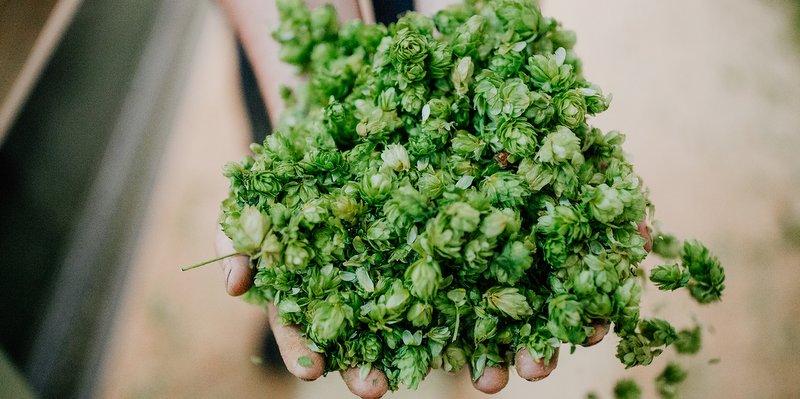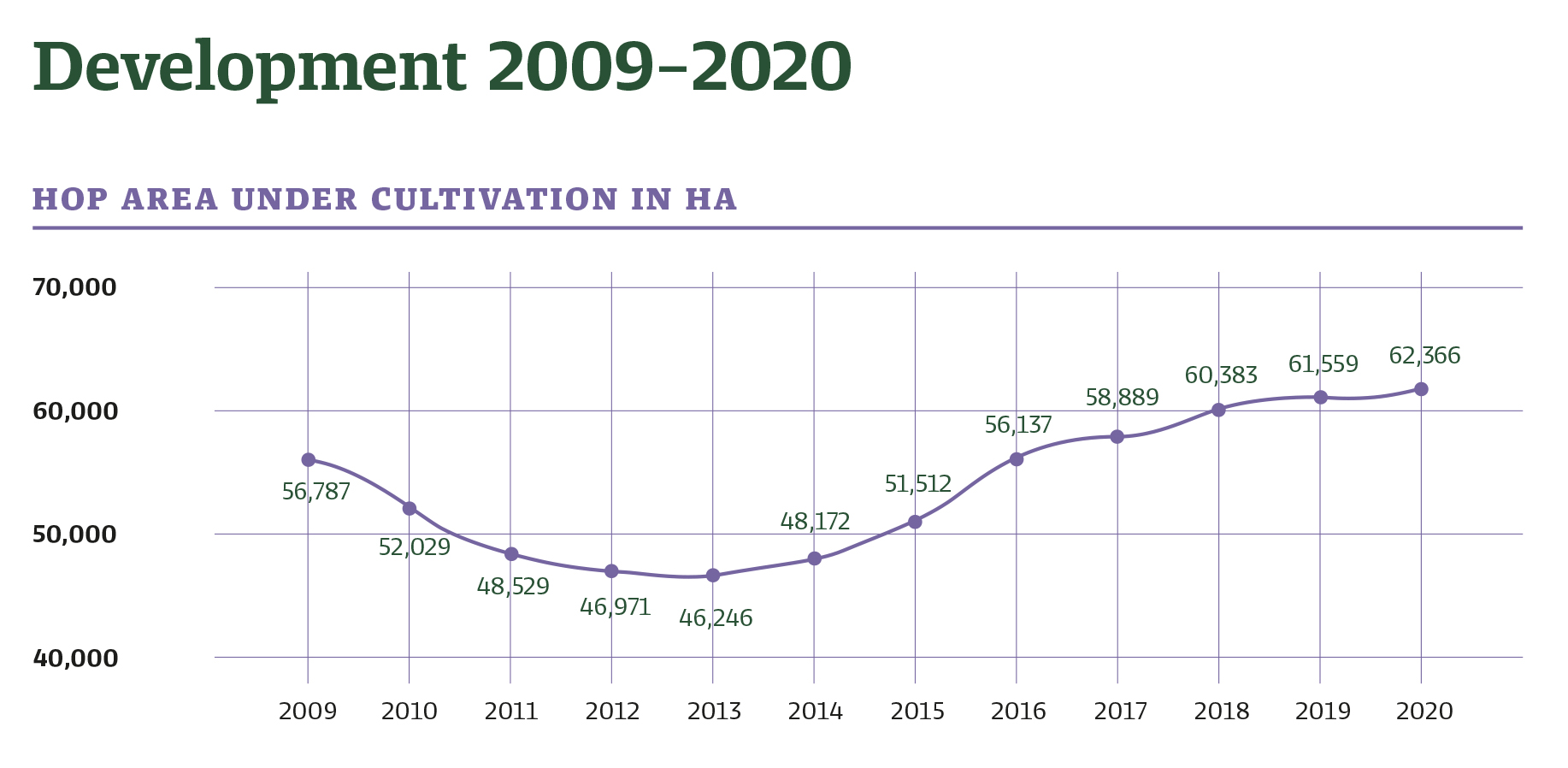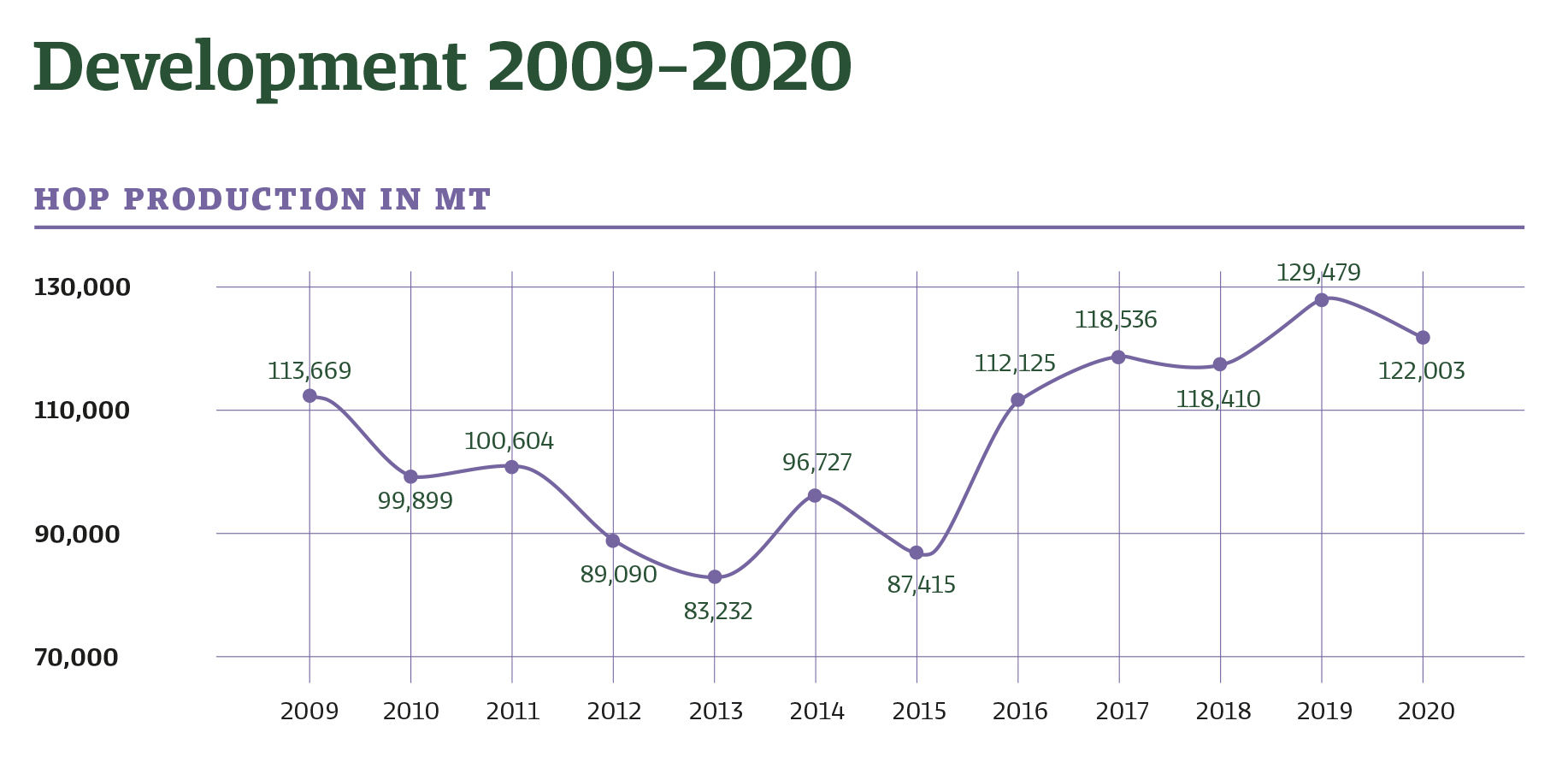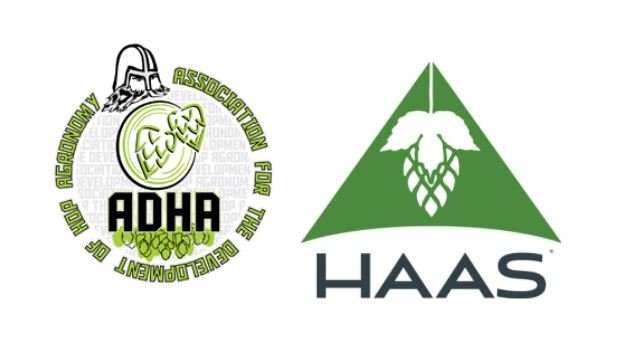
World hop acreage rose in 2020 for the seventh year in succession. The country with the largest share of hop acreage worldwide is the United States with 40 percent, followed by Germany with 33 percent and the Czech Republic with 8 percent. This is one of the facts contained in the BarthHaas Report Hops 2020/2021 that the world’s leading hop specialist presented at an online press conference on July 22.

In 2020, world hop acreage increased by 1.3 percent to 62,366 hectares. In spite of the increase in acreage, production volume was 7,500 tons lower year on year. Half of the decline can be attributed to a below-average harvest in the USA. “In the USA, we really felt the effects of the climate crisis last year for the first time: when the harvest began, forest fires were raging in the vicinity of our hop-growing areas. The climatic conditions that fueled these forest fires also caused unusually hot winds at the beginning of the harvest, reducing yields by more than 10 per cent,” explains Alexander Barth, the family company’s managing partner responsible for the US market.
Alpha acid at all-time high

In addition to production volume, alpha acid is a decisive factor for the beer and hop industries. (Explanation: The alpha acid is the most important hop constituent for brewing and is responsible for the bitterness of the beer.) “Although the volume of alpha harvested was only slightly higher than the year before, it was still a new all-time record despite the fact that production volume was 6 per cent lower year on year” says Heinrich Meier, the author of the Hop Report.
Again in 2021, the growing season did not begin very well. In Europe it was generally too cool, with the result that by the end of May growth was behind by up to two weeks. In the meantime there have been storms, with hail damage to trellis systems in the Czech Republic, Poland and Germany (Tettnang region). In the USA the hops are labouring under a heatwave. The further development of the weather conditions will ultimately decide what volume of hops and alpha acid is available to the market.
Hop surplus due to falling beer output

“The supply of hops from the 2020 harvest will exceed demand in the 2021 brewing year. The market will therefore show a hop surplus for the second year in succession”, says Meier. “Initially, however, there were only minor price reactions in the hop market, probably in part because, due to the very high proportion of forward-contracted hops and the poor harvest in the USA, the volume of spot hops available was low”, explains Meier.
Depending on the further course of the pandemic, he thinks weak demand has to be expected for the next few years. “The global hop industry can only counter surplus production by adjusting acreage. This is urgently necessary for the market to return towards equilibrium”, says Meier.
Alexander Barth points out, however: “These days, overproduction can quickly turn into a shortage for climate-related reasons. Harvests can no longer be planned as they used to be and yields are fluctuating more widely.” The brewing industry would be well advised to maintain higher stock levels in order to have a buffer for lean times. “All in all, we are facing challenging times.”





Leave a Reply
You must be logged in to post a comment.